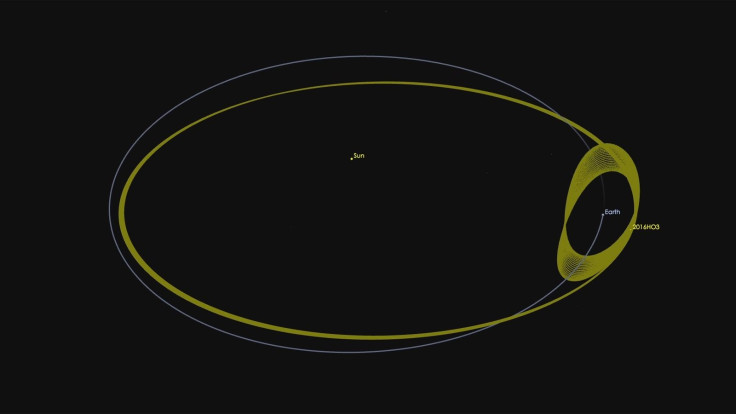Scientists Catch Earth’s Mini-Moon, An Asteroid With A Special Orbit

Astronomers are learning more about an asteroid caught in a strange loop that has it orbiting both the sun and the Earth. According to the team’s research, it is similar to other space rocks that have crashed down on our planet.
The scientists were observing an object that NASA previously identified as an asteroid that circles Earth during its strange orbit around the sun. The new data collected confirms the object is indeed an asteroid — rather than a piece of space junk, like an old rocket booster — and that its makeup looks similar to other small rocks near the planet, according to the University of Arizona.
They also have a size estimate for the asteroid; it could be as small as 100 feet across and is no larger than 330 feet.
The team used the Large Binocular Telescope in Arizona to make its observations, and announced its findings at the American Astronomical Society’s Division for Planetary Sciences Meeting in Utah.
Asteroid 2016 HO3 “is a small near-Earth object … that, while orbiting the Sun, also appears to circle around the Earth as a ‘quasi-satellite,’” the university explained. “Only five quasi-satellites have been discovered so far, but 2016 HO3 is the most stable of them.”
That handful of other quasi-satellites includes an asteroid called 2003 YN107, which was looping around Earth during its solar orbit about 10 years ago, but has since disappeared.
Meanwhile HO3 is here to stay for a while: NASA says orbital projections show it remaining in its current orbital pattern at least a few centuries. In fact, HO3’s details on the space agency’s near-Earth object (NEO) database include a list of its passes by Earth through June 2200.
On a closer timeframe, its last pass happened a few weeks ago, and its next pass is scheduled for April 2018.
The list of close approaches to Earth also goes back to the year 1910.
“This new asteroid is much more locked onto us,” NASA’s Paul Chodas, the manager of the Center of Near-Earth Object Studies, said last year.
The space agency also explained that HO3’s irregular orbit includes a tilt that makes it “bob up and then down once each year through Earth’s orbital plane. In effect, this small asteroid is caught in a game of leapfrog with Earth that will last for hundreds of years.”
There is still more to learn about this asteroid.

“While HO3 is close to the Earth, its small size — possibly not larger than 100 feet — makes it challenging target to study,” lead astronomer Vishnu Reddy said in the statement.
The classification of the object as being near Earth is relative to the vast distances in space. It moves between 9 million and 24 million miles away from Earth, a distance that on the low end is 38 times farther away from us than the moon and on the high end is 100 times farther.
But the astronomers were able to see HO3 enough to determine that it rotates on its axis every 28 minutes.
What remains unclear is where the asteroid originated, although details about its composition could lead astronomers down the right path. The university says it is similar to other small objects that pass near Earth, and to meteorites that have been found on Earth after space rocks have entered our atmosphere and crashed to the ground.
“The derived rotation period and the spectrum of emitted light are not uncommon amongst small NEOs, suggesting that 2016 HO3 is a natural object of similar provenance to other small NEOs,” Reddy said.
© Copyright IBTimes 2025. All rights reserved.



















